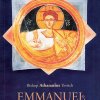http://www.h-net.org/reviews/showrev.php?id=2958
Radmila J. Gorup, Nadezhda Obradovic, eds. The Prince of Fire. Pittsburgh: University of Pittsburgh Press, 1998. xvi + 371 pp. $19.95 (paper), ISBN 978-0-8229-4058-6.
Reviewed by Melissa Bokovoy (University of New Mexico)
Published on HABSBURG (April, 1999)
Fiction as History: Contemporary Serbian Short Stories
All of us, at one time or another, have assigned fiction in our history classes. Sometimes there is nothing better than a novel, a poem, or a short story to convey to students a sense of a society's everyday life, norms, values, and cultural and historical legacy. Radmila J. Gorup and Nadezda Obradovic have edited a collection of short stories by contemporary Serbian writers that successfully depicts many intangibles of Serbian society in the twentieth century. The Prince of Fire, the title shared by a short story in this volume by Filip David, endows Serbs with their own voice.
Through their most important literary genre, the short story, Serbian writers explore themes common to the human experience, love, failure, suffering, mercy, death, despair, poverty, and isolation. Yet these stories are set against the backdrop of Serbia's historical experiences as a cultural, social, and political borderland; and as a place where multiple identities converge, often conflicting or merging with each other. Charles Simic notes the role that literature plays in explaining this process: "literature ... makes complex issues even more multifarious. Given the political, religious, and ethnic history of the Balkans, how could it ever by any different" (p. ix).
The editors acquaint the reader in a brief introduction with the literary significance of the genre and the place of the short story in twentieth century Communist Yugoslavia. As the short story developed in post World War II, it borrowed heavily from two trends existing before the war, surrealism and realism. Both these trends survived the war and a brief attempt to subject writing to the doctrine of socialist realism. What eventually emerged on the literary scene in Serbia was the continuation of a long realist tradition and a Serbian form of magic realism. It is in the second form that many in the West have come to know Serbian literature, primarily through the works of Danilo Kis and Milorad Pavic. However, this anthology of contemporary Serbian short stories demonstrates that, whether the style is traditional or postmodern, history is present. "While it is not presented in an objective and epic fashion, it is nevertheless there, internalized and deconstructed on the level of individual protagonists" (p. xv).
Three historical questions dominate: 1) What is the nature of Serbia's relationship with the rest of Europe; 2) How does the fact that Serbia is a borderland influence its identity; and 3) What is the legacy of World War II and Tito's Communist Yugoslavia on Serbia today? While not every story fits into one of these categories, enough of them do to make this collection worthwhile for students of South Slav history.
One of the first stories in the collection, Pavic's "The Wedgewood Tea Set," explores the relationship between Serbia and Europe. Is Serbia the poor student who seeks to learn from the West, or does the student simply seek to take what it can in material goods, forsaking what the West thinks it can teach the student? Does the student really seek to learn something or does he feel that he can teach Europe something as well? Whatever the answers to these questions are, Pavic envisions the relationship between Europe and the Balkans as built not on mutual trust, understanding, and patronage, but on deception, misunderstanding, and condescension.
Borislav Pekic's story "Mealos Mastoras and His Work, 1347 A.D." sees a different Balkans than that of Pavic's. He portrays the Balkans as a place of cultural and intellectual enlightenment. In this story, the author writes of artistic genius. Readers will find this story unique, not because it investigates this theme, but because of its focus, the artistic talent of a Greek woodcarver. Pekic's story reminds those of us who teach Western Civilization that genius is not only the preserve of Renaissance greats. Craftsmen and women of the High Middle Ages and early Renaissance created some of the most beautiful works of art of any age and many of these craftspeople lived and worked in the Eastern Mediterranean, influenced by the cultural traditions of the Hellenic, Roman, and Byzantine empires. Pekic adds another historical dimension to the story. His antagonist is not human, but the arrival of the Black Plague in Europe.
Pekic's story demonstrates how borderlands become places of cultural fusion and syncretism. Yet, as Svetlana Velmar-Jankovic's "Sima Street" shows, cultures and politics also clash where civilizations met. In this story, the author fictionalizes a well-known incident in Belgrade in 1862, the death of Sima Nesic, a police interpreter. 1862 in Belgrade is a contested space, the Belgrade population restless with the rule of the Turks, the Turks fearful of insurrection. Into the middle of this steps Nesic, the interpreter or targuman, who believes that "much evil stemmed from the fact that people were unaccustomed to listening to or understanding each other ... people should have been taught to handle words instead of guns" (p. 85). This idealism ultimately results in his death. However, the author argues that his death did not become a symbol for what he believed or who he was. Instead, Serbian history appropriated his death as a symbol of national resistance, obscuring the targuman and thus, wiping from history a cultural and political mediator.
Vida's Ognjenovic's "The Duel" and Jovan Radulovic's "Linea Grimani" familiarize the reader with the other frontier Serbs occupied, along the margins of the Austro-Hungarian Empire. Both stories revolve around the events of the First World War and the contested space that Serbs inhabited. Again, the theme of resistance to occupiers resonates.
The other historical backdrop present in these stories is Serbia's experience during World War II and Tito's Yugoslavia. Mladen Markov captures the ethnic tensions and hierarchies existing in the Banat during Hungarian occupation. He places both his protagonists and antagonists on a train traveling through the Banat. Vidosav Stevanovic, born during World War II, tells the story of D.S., a young father whose son recreates him through fragments of remembrance, history, and memory. As the son recreates the father, he honors and respects his father's sacrifice. This cannot be said of Milica Micic Dimovska's account of a widow's remembrance in the story, "Smiles." Micic Dimovska captures the bitterness of remembering those who gave their lives to the ideal of Tito's Yugoslavia. Fifty years later, the widow of a dead hero realizes that those sacrifices were for nothing. The dedication of the bust of her husband, a railway man, is nothing more than a wake. Metaphorically, it can also been see as a wake for the idealism that had inspired her husband in the first place.
Tito's Yugoslavia and Tito are treated critically in the stories of Moma Dimic, Slavko Lebedinski, Svetislav Basara, and Milisav Savic. Communist Yugoslavia did not eradicate poverty and despair from the lives of Serbs, nor did it deliver the promised utopia. Writing about the slums of Belgrade, Lebedinski's "Sweet Turtledove" reveals the violence and hopelessness of those Serbs who lived there, and their contempt for the communist cadres and their meetings. The narrator observes: "Manager Karaveljic believed that it was possible to solve everything at a meeting. You summoned the people, you read them the party newspaper, The Struggle, in which it was clearly written who the imperialists' supporters were, and then, under the last item on the agenda, you simply strong-armed everyone who spread crime in Dorcol" (p. 156). Moma Dimic, in "The Night Under Kosmaj," laments the necessity of young Serbs to go to Germany or elsewhere to make their fortunes. The father in the story deplores the fact that his son works in Germany and that "our people are all scattered over the world ..." (p. 220).
Anger and bitterness for the results of communism are seen in Basara's "A Letter from Hell." He observes Communism creating a world like "an empty city with gray buildings decorated with countless posters and banners proclaiming: ONWARD TO NEW WORKERS' VICTORIES!" (p. 331). This world is equated with the first circle of hell, containing "outcast sinners, paltry wrongdoers, useless souls" (p. 326). He believes that those who created it will be condemned to such a place for eternity. Milisav Savic's "The Locksmith was Better" explores the real meaning of dissident literature under Tito by imagining Jorge Luis Borges's recitations on Tito and his regime.
Emerging from these stories is a portrait of Serbia, and more generally the Balkans, as a complex and intricate social, political, cultural, and historical entity. It is not enough to say that this is a world where warring civilizations met and ghosts haunt every action or event. Borderlands are enigmatic, not easily described nor analyzed. At any given time, the various pieces of the puzzle create different portraits. That is why this collection is important for the study of South Slav history. It not only shows the points of contention caused by conflicting forces. More often than not, these stories demonstrate the universality of the human struggle, not for land or power, but for love, happiness, joy, and success. They also show how humans cope with the disappointment, suffering, failure, and bitterness that result when expectations are not fulfilled. Readers will not only be informed about the history of the Serbia; but they will find the variety of styles and themes compelling.
It is difficult not to recommend most of these short stories to students of East European history, and the University of Pittsburgh Press has priced this collection for course adoption. However, I will add words of caution. First, the authors claim that this "anthology can serve as a continuation of The New Writing in Yugoslavia, edited by Bernard Johnson (Baltimore: Penguin Books, 1970). This is not so. The overwhelming majority of these authors are Serbs. There has been little attempt to include the voices of other ethnic groups currently living in the newly reconstituted Yugoslavia, Montenegro and Serbia. What this collection does include are selections from ethnic Serbs living outside Yugoslavia, either in other [former] republics or as exiles. Second, there are few selections by women and there is little in the volume that represents women's experiences in Serbia. Third, this collection contains over thirty stories and it will take some effort by the instructor to guide the students through the maze of themes, places, and persons. I highly recommend that those of you not closely familiar with the history of the Balkans to use HABSBURG as a site of inquiry. Along with other South Slav specialists, I would be glad to help.
Copyright (c) 1999 by H-Net, all rights reserved. This work may be copied for non-profit educational use if proper credit is given to the reviewer and to HABSBURG.




